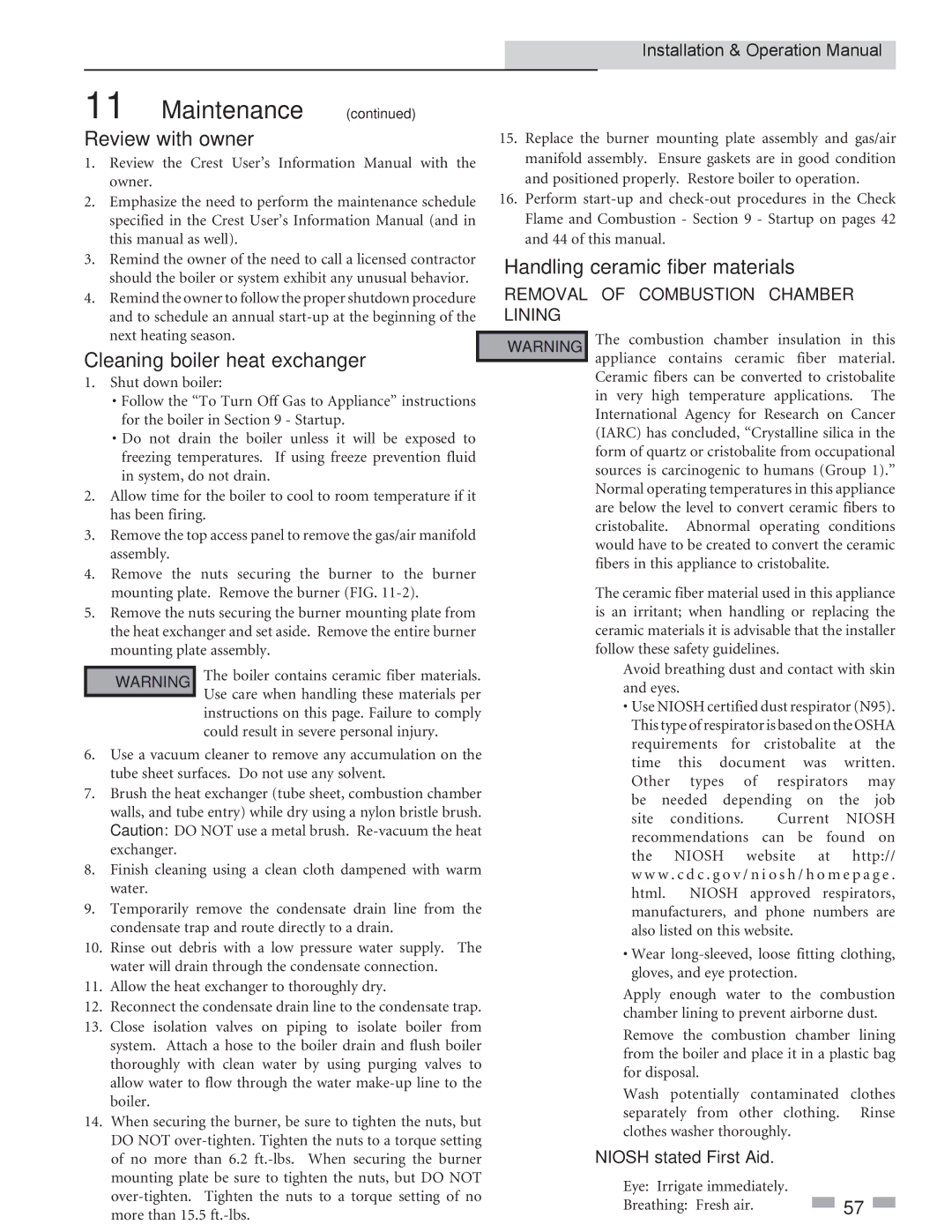3, 2, 3.5, 2.5 specifications
The Lochinvar 2, 3, 3.5, and 2.5 models are a standout lineup in the realm of commercial and residential water heating solutions. Known for their advanced technology and high efficiency, these units cater to a wide range of applications, ensuring optimal performance and reliability.One of the key features of the Lochinvar models is their robust construction. Each unit is designed to withstand rigorous operational demands while providing excellent thermal efficiency. They are equipped with stainless steel heat exchangers, which offer superior resistance to corrosion and extend the lifespan of the equipment. This durability is essential for both commercial and residential settings where demand can vary significantly.
The Lochinvar 2, 3, 3.5, and 2.5 models utilize innovative control systems that enhance their operational efficiency and user convenience. The built-in Smart Control technology allows for easy monitoring and adjusting of system parameters, ensuring that users can maintain optimal performance with minimal effort. This feature is especially beneficial in commercial settings where large volumes of hot water are required, as it enables users to effectively manage their energy consumption.
Energy efficiency is another hallmark of the Lochinvar lineup. With high-efficiency ratings, these models help reduce energy costs significantly, making them an environmentally friendly option for heating water. The use of advanced combustion technology ensures that these units can deliver maximum heat output with minimal fuel consumption.
Additionally, the Lochinvar models are designed with safety and reliability in mind. They feature multiple safety controls and diagnostics that alert users to potential issues before they escalate, providing peace of mind. The integration of advanced venting options allows for flexible installation configurations, accommodating various building layouts and space requirements.
In summary, the Lochinvar 2, 3, 3.5, and 2.5 models define modern water heating technology with their combination of durability, efficiency, and advanced features. With their innovative design and user-friendly controls, they meet the demanding needs of both commercial and residential users, making them a top choice in the water heater market. Whether for new installations or replacements, these units deliver reliable performance and value.

